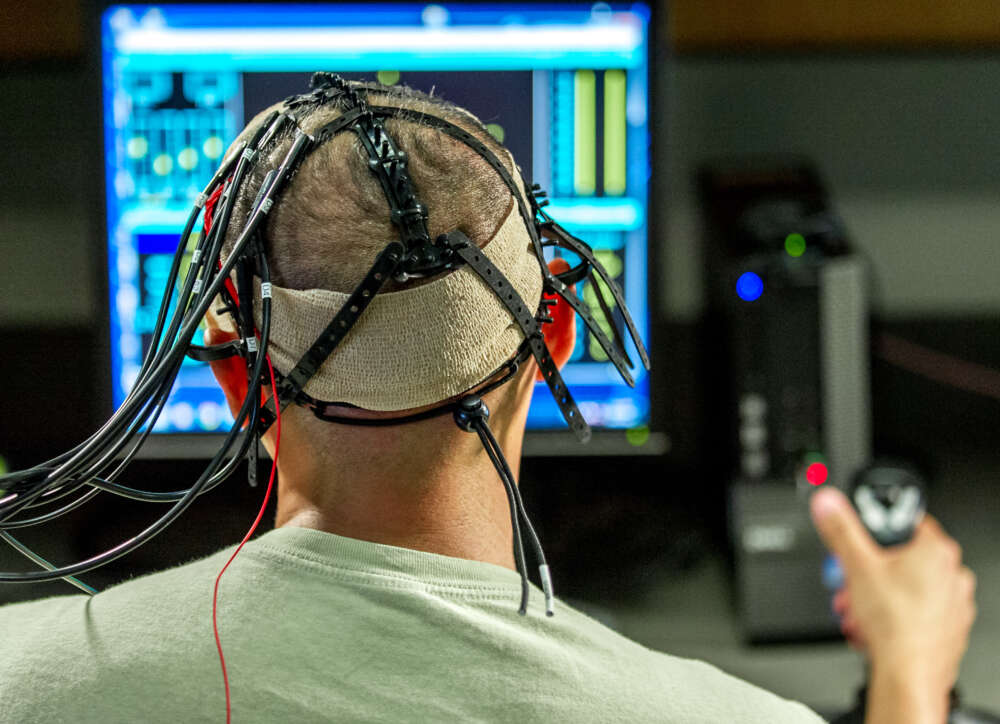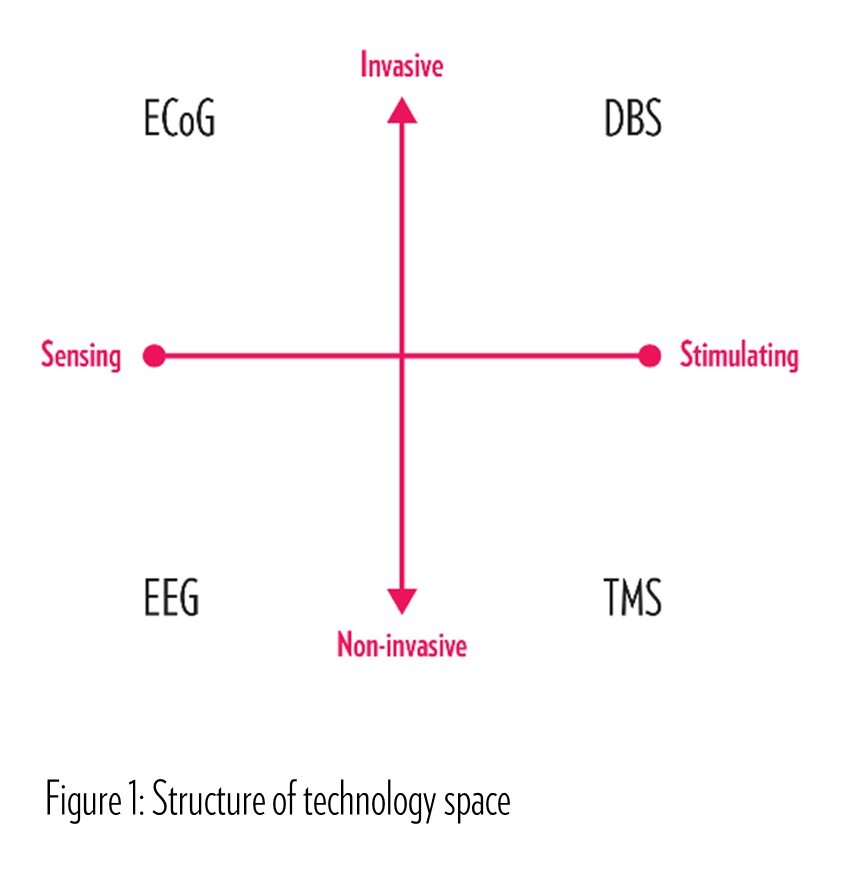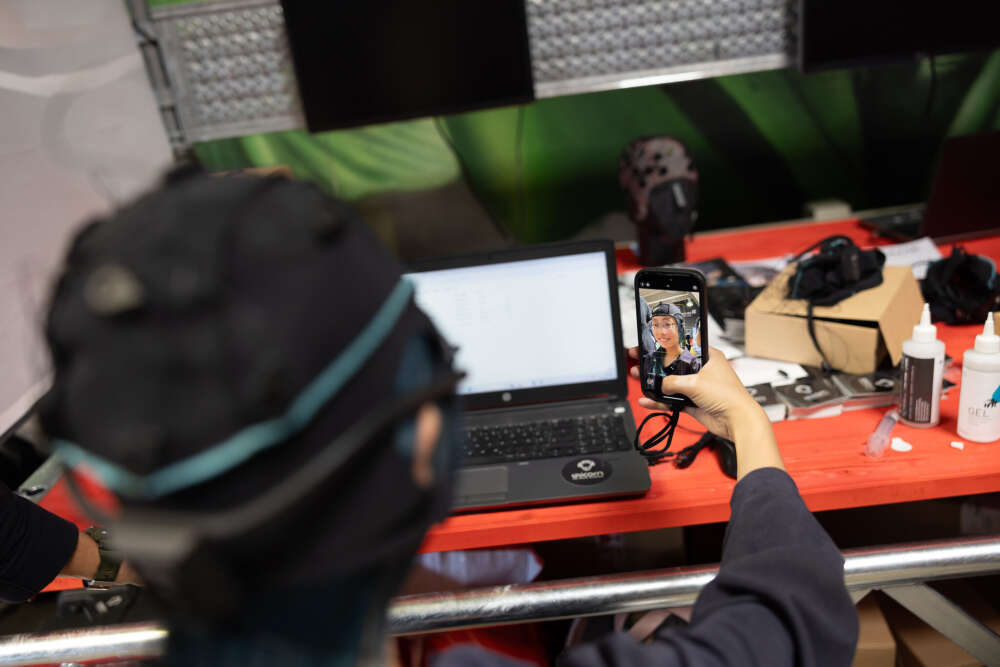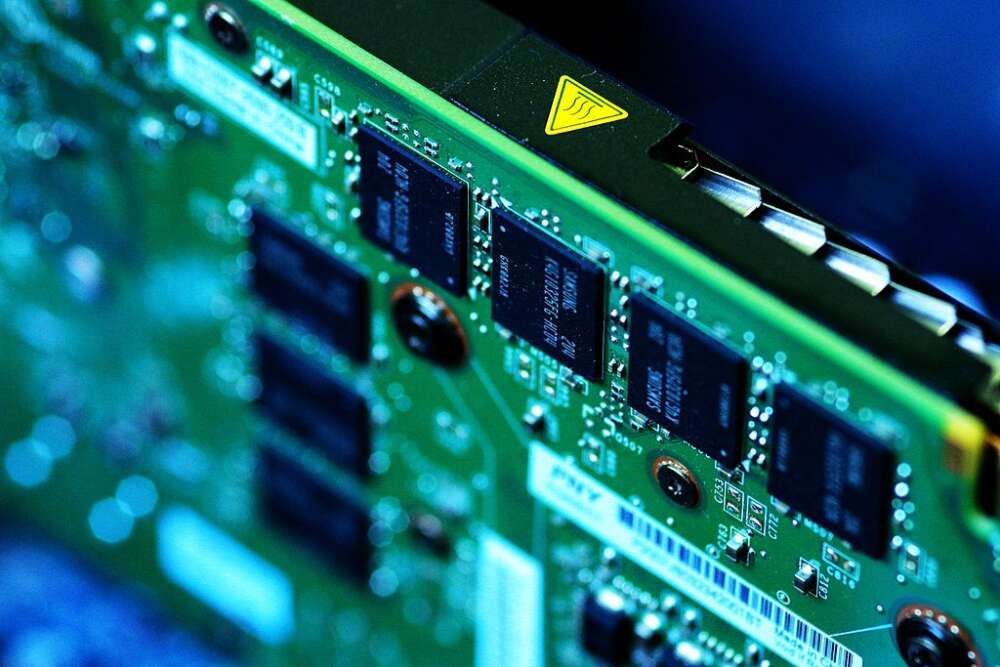Neurotechnology: A New Frontier for Prosperity and Security in Germany and Europe?

Competition and control over rapidly advancing technologies have become central aspects of global power politics. Within this global race for tech supremacy, artificial intelligence (AI) and its underlying hardware have taken center stage in recent years, notably as the focal point of the Biden administration’s agenda on technology controls.
In the shadow of these fields, other technologies are also evolving rapidly but have received much less attention. Among them, neurotechnology stands out for its potential to fundamentally change how humans process information and interact with each other and their environment. In some ways, neurotechnology raises questions that are pertinent to a broader set of technologies at a relatively early stage of adoption; in other ways, the field’s possibilities and challenges are unique. The direct interaction with the human brain makes neurotechnology distinctly sensitive and may enable far-reaching changes to the human experience, and indeed human nature itself.
This article considers neurotechnology from the vantage point of German and European foreign and security policy, providing an initial overview of why and how the field is likely to become highly relevant in the foreseeable future. We highlight that any adequate strategy on this issue must extend well beyond military applications and dual-use concerns. Given the possible scenario of neurotechnology evolving into a form of decentralized critical infrastructure, protecting data security and guarding against surveillance, espionage and malicious interference are similarly essential. Moreover, policymakers should actively pursue the opportunities that neurotech offers regarding societal benefit and prosperity, while avoiding strategic dependencies.
Neurotechnology: Monitoring and Modifying Processes in the Brain
Neurotechnology encompasses a diverse range of methods and devices aimed at monitoring or modifying brain signals by leveraging the brain’s properties as an electrochemical system. The various technologies can be categorized and mapped by their degree of invasiveness and their primary functionality, which can be either sensing or stimulating (see Fig. 1).

Some non-invasive neurotechnologies have been available for decades. Electroencephalography (EEG), for example, is a widely used tool to measure brain activity, while transcranial magnetic stimulation (TMS) enables external stimulation of certain brain regions and is an approved treatment for certain mental health conditions like depression.
Invasive techniques, which rely on the insertion of (parts of) a device into the brain or on other physical modifications of the neural system, constitute a more recent and emerging branch of neurotechnology. In addition to dedicated research and development specifically on invasive devices, advances in this area are closely linked to scientific progress in fields like material science, biotechnology and nanotechnology. Invasive techniques to record neural signals, such as electrocorticography (ECoG), as well as to stimulate the brain, such as deep brain stimulation (DBS), are now readily available. DBS is already incorporated into the symptomatic treatment of Parkinson’s disease for over 185,000 patients worldwide.
Compared to non-invasive methods, invasive devices offer a higher level of precision and signal resolution, thanks to their more direct access to the nervous system; they are also less prone to get displaced during operation. A clear downside, however, is that they need to be inserted surgically, which poses risks and is usually at least partly irreversible. Innovators are seeking to address this fundamental challenge through solutions such as implants for insertion via the jugular vein, which would avoid brain tissue damage. Other approaches currently being tested include a “biohybrid” design that uses stem cells to grow a neural pathway, connecting the device to the brain.
A particularly important branch of neurotechnology is that of brain-computer interfaces (BCIs), which connect the neural system with a computer. Such a connection can serve to enable various applications, such as controlling a prosthesis or robot arm, executing commands in an operating system, or accessing further resources via the internet. Due to this linkage, advances in neurotechnology are closely intertwined with other emerging technologies such as AI, which is quickly becoming an enabler of significantly improved reading and interpretation of brain signals.
Simultaneously, AI and computing technologies benefit from advances in understanding human intelligence and the brain, most obviously in the form of neuromorphic computing using chip and algorithm designs inspired by the brain. Ultimately, combining neurotechnology and AI opens up novel ways to integrate human and artificial cognitive processes, which may also converge with developments in virtual and augmented reality (VR and AR), as well as robotics.
Neurotechnology is already flourishing in the medical sector. It enables established instruments that help diagnose and treat certain conditions better than any available alternative; restoring communication for people with paralysis comes to mind. Medical applications currently constitute the dominant set of use cases, and this is likely to remain the case, at least in the short term. Given recent technological developments that promise much-improved relief for certain conditions (for example, upper and lower limb impairment), a 2024 Morgan Stanley analysis estimated the early and intermediate market potential for medical BCIs to be around 400 billion USD in the US alone.
In addition to these medical applications, entrepreneurs are continuously exploring opportunities to shift the possible uses of neurotech toward a broader consumer market, mostly in the form of non-invasive wearables with low entry barriers for customers. For example, US startup Neurable has sought to market headphones with integrated EEG functions as a “Fitbit for your brain.” Meta’s efforts to develop non-invasive technology to accurately translate brain signals directly into text are also reportedly making rapid progress. While experts’ expectations on specific adoption pathways and timelines vary considerably, most people with knowledge of the field share the view that neurotechnology will eventually see widespread non-medical use. Due to its foundational nature and its potential to enable new approaches in fields like communication, work and study or leisure and entertainment, some expect it to become a platform technology comparable to smartphones today.
While the implications of such a development somewhat depend on how exactly the technologies would be implemented and adopted, they would clearly engender profound societal and economic consequences as well as security implications. There is at least a distinct possibility that a self-reinforcing dynamic of technological advances and soaring adoption of neurotech across fields may occur in the near future. The case for actively engaging with this issue is, therefore, urgent – both in general terms and more specifically from a foreign and security policy perspective.
Why Neurotechnology Matters for Foreign and Security Policy
Analytically, it is helpful to break down the relevance of neurotechnology to foreign and security policy into three dimensions, each of which corresponds to a successively more holistic conception of security: (1) military applications and dual-use, (2) protection against data and cyber security risks and (3) economic security and advancement of societal prosperity.
Neurotechnology’s possibilities are of obvious interest to those connected to the military (dimension 1). Actors like NATO and the Defense Advanced Research Projects Agency (DARPA), the US governmental research agency on emerging technologies for military use, have thoroughly engaged with the field for several years now. When thinking about how to put neurotechnology to use on the battlefield, these actors gravitate to the applications that enhance human abilities and create direct access to the brain. Examples of such applications range from preventing and treating medical conditions, influencing mood and alertness, improving sensory reception, learning and communication (including “silent talk,” through a direct connection between BCIs), to controlling exoskeletons, vehicles, weapon systems, and other equipment directly through the brain. Many aspects of human enhancement, moreover, are not only potentially useful on the battlefield but also in areas such as planning, logistics and strategic and tactical decision-making.
Especially in a context where a large part of the civilian population would use certain neurotech devices or BCIs, “neuro-warfare” is also a conceivable scenario. This would turn human brains into bona fide military targets, fusing state-of-the-art technology with “PsyOps” and information warfare.
Generally, the technologies underpinning relevant military use cases are the same that enable various medical and consumer applications, making it difficult to distinguish between military and civilian research. While some important stakeholders (such as the EU-funded Human Brain Project) have seriously engaged with the obvious dual-use concerns arising from this situation early on, it remains a challenge to develop mitigation measures beyond the adoption of ethical frameworks governing research in Europe itself.
Given Europe’s acute security and defense challenges, it is crucial that European policymakers resist the impulse to solely rein in the development of relevant technologies. Instead, they must also consider opportunities to actively build and maintain technological advantages over potential adversaries, and design policies aimed at controlling the development and proliferation of neurotechnology accordingly. In the United States, the past years have already seen substantial discussion on potential export controls on BCIs, mirroring developments in AI and underlying hardware.
Advances in the field of neurotechnology will come with certain risks that go beyond the military domain, particularly in terms of data protection and cyber security (dimension 2). Any interface connected to the neural system is highly sensitive and vulnerable to attacks by nefarious actors. What is more, monitoring brain signals generates large amounts of personal data, which comes with some distinctive challenges such as inherent limitations to anonymization. Meanwhile, the collection of brain data, especially for non-medical purposes, is currently not subject to specific regulation beyond generic privacy frameworks such as GDPR, whose suitability for this type of data is subject to ongoing debate.
Furthermore, the ability to directly influence the brain through technological devices raises concerns about risks that range from subtle interference to inducing harm or incapacitation. The growing use of AI in neurotechnology makes these risks all the more pressing. In addition to boosting malicious data collection and disinformation efforts, the involvement of AI also creates challenges regarding attribution, intent and accountability. When, for example, AI is used in processing brain signals, issues such as the impossibility of explaining how a model arrived at a certain interpretation are effectively copied over to neurotechnology.
Besides the possibility of jeopardizing the privacy and autonomy of individuals, be it through inadequate data security and governance or a deliberate attack, threats to national security from foreign surveillance and interference could soar with widespread adoption. With its potential to permeate all aspects of social and economic life, neurotechnology may eventually become a decentralized form of critical infrastructure.
Governance and regulatory frameworks need to account for these possible systemic data and cybersecurity threats as early as possible, carefully balancing the interests of consumers, researchers and businesses. Lawmakers have found themselves confronted with similar issues when dealing with the security threats connected to telecommunication hardware within cellular networks, connected vehicles or the social media platform TikTok; applications in neurotechnology, however, are arguably even more sensitive.
Mitigating these risks is an issue at the intersection of homeland security and national security, where initiatives at the international level – say, developing global technical standards and driving multilateral agreements on safe and ethical development – will play an important role in complementing domestic regulation. These efforts extend beyond an immediate security rationale; ultimately, this is about the basic ability of a society to control the proliferation and use of novel technology with vast societal and ethical implications.
Finally, as the commercialization of neurotechnology beyond the medical field accelerates, neurotechnological applications will likely develop into an important driver of economic prosperity (dimension 3) – both in terms of the development of a domestic neurotechnology industry and in terms of an overall boost in productivity made possible by the adoption of neurotechnology across sectors. The field promises vast potential for economic and societal benefit. While helping unlock this potential largely falls into the realm of innovation, technology and broader economic policy, foreign policy also has a role to play (in terms of fostering international partnerships, for example).
At the same time, efforts must be attuned to potential risks to economic security. Global supply chains for neurotechnology are still developing dynamically and may give rise to strategic dependencies on external suppliers and resources, which could render Germany and Europe vulnerable to economic coercion in yet another important field. While there is currently no obvious example of a major chokepoint in the global neurotechnology ecosystem, evolving input needs and supplier landscapes merit closer scrutiny. Conversely, if domestic players manage to build strengths in important technological niches, that could make Germany and Europe more “strategically indispensable” to other global actors, providing leverage in managing interdependencies politically.
Where Germany and Europe Stand Today, and What Lies Ahead
Reaping the potential benefits of neurotechnology in Germany and Europe while effectively addressing security and broader political concerns will be considerably easier if domestic companies and research institutions play leading roles in the global ecosystem. Constructive policy can help achieve such a position, but a sober appreciation of the status quo is in order as a starting point.
Currently, a large share of applied neurotechnology research and entrepreneurial activity is concentrated within the US, which boasts the highest research output and hosts the largest number of relevant business actors globally. The US has pulled ahead, particularly in the realm of developing and testing invasive technologies. This dominance is in part due to the availability of substantial private and public funding for researchers and businesses, supported by favorable regulatory conditions. Established stakeholder networks nurturing further cooperation also help the US sustain and expand its advantage.
In the last few years, China has ramped up its efforts within the neurotechnology sector, establishing numerous research institutions and companies; these efforts have recently been complemented by action plans to turn Shanghai and Beijing into global hubs of the BCI industry. China has cemented its focus on brain research in its 14th five-year plan (following the theme’s initial inclusion in the 13th five-year plan, which coincided with the launch of a dedicated China Brain Project). China’s leadership is particularly eyeing synergies between AI and neurotechnology.
The EU, and Germany in particular, is home to research institutions conducting cutting-edge foundational research that could underpin practical neurotech applications. A handful of promising neurotech companies have also emerged in the last few years. However, Europe’s broader struggle to translate foundational research into consumer-oriented innovation plays out starkly in neurotechnology, with start-ups facing myriad regulatory and financial hurdles, especially when it comes to medical applications.
In order to play a meaningful role on the global stage, it will be crucial to turn this academic strength into marketable products. Besides already widely-discussed reforms to facilitate commercialization and to improve conditions for scaling businesses across the EU, this will require a regulatory environment that places greater emphasis on fostering competitive innovation, while still appropriately safeguarding individuals. Important aspects of such an environment would be a more solution-oriented interplay between innovators and approval bodies, as well as the establishment of secure, privacy-preserving mechanisms to make data available for research purposes.
In the US and China, an understanding and awareness of neurotechnology as a matter of national security is clearly on the rise. In Germany and the EU, however, the field remains largely unnoticed, beyond a niche community of stakeholders. The time is now for foreign and security policy actors to develop a coherent strategy on neurotechnology and to start implementing priority measures.
This paper’s framework provides a starting point for scoping this effort and for outlining the key dimensions in need of addressing. A deeper analysis of how Germany and Europe are currently positioned in the global ecosystem and the concrete recommendations that flow from this positioning will follow.
Acknowledgements:
This piece is published as part of the GPPi project “Neurotechnology: Considerations for Foreign and Security Policy”, which is funded by the German Federal Foreign Office. It solely reflects the analysis and opinions of its authors.
The authors greatly benefited from inputs from Peter Schlecht, as well as from feedback on interim project findings offered by the participants of a workshop on 17 March 2025 and comments from GPPi colleagues Thorsten Benner, Florian Klumpp, and Sofie Stoffel. Any errors and omissions are the authors’ responsibility.







